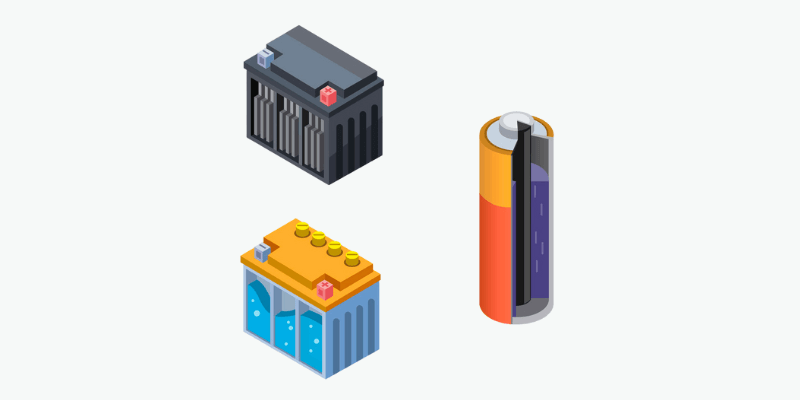Il dibattito tra batterie a secco e a umido è significativo nella tecnologia delle batterie. Comprendere le loro differenze è importante per scegliere la giusta fonte di alimentazione per varie applicazioni. Esploriamo le distinzioni e i vantaggi di ciascun tipo.
Cos'è una batteria a secco?
Composizione e struttura
Una batteria a secco contiene diversi componenti essenziali che generano energia elettrica, tra cui:
- Anodo (elettrodo negativo): l'anodo, solitamente di zinco, è il punto in cui si verifica l'ossidazione, con conseguente perdita di elettroni durante la scarica della batteria.
- Catodo (elettrodo positivo): il catodo, costituito da carbonio o grafite mescolati con biossido di manganese, è il luogo in cui avviene la riduzione, guadagnando elettroni durante la scarica.
- Elettrolita: a differenza degli elettroliti liquidi, le batterie a celle a secco usano una pasta elettrolita, spesso una miscela di cloruro di ammonio e cloruro di zinco, che facilita il trasferimento ionico tra l'anodo e il catodo.
- Separatore: posizionato tra il anodo e catodo, il separatore, comunemente realizzato in carta o un materiale simile, impedisce il contatto diretto e il corto circuito, consentendo al contempo gli ioni di passare.
- Involucro: l'assemblaggio è alloggiato in un involucro sigillato di solito in zinco o in acciaio, che protegge i componenti interni e funge da terminale di catodo per collegamenti elettrici.
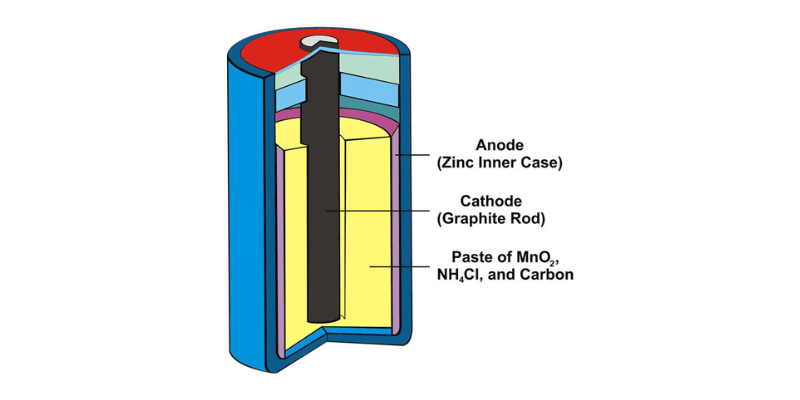
Vantaggi e svantaggi
Le batterie a celle a secco offrono diversi vantaggi che le rendono popolari per l'alimentazione di dispositivi elettronici:
- Portabilità: Le celle a secco sono compatte e leggere, ideali per dispositivi portatili.
- Sicurezza: Sono sicuri da usare, poiché mancano di elettroliti liquidi che possono perdere.
- Lunga durata della conservazione: Le celle a secco mantengono la carica per periodi prolungati anche se inutilizzati.
- Disponibilità: Sono ampiamente accessibili e convenienti.
- Facile da usare: Non è necessaria alcuna gestione o manutenzione speciale.
Mentre le batterie a celle a secco offrono numerosi vantaggi, vengono anche con alcuni svantaggi di cui gli utenti dovrebbero essere a conoscenza:
- Non-arrendibile: Una volta esauriti, non possono essere ricaricati e devono essere sostituiti.
- Densità energetica inferiore: Le cellule asciutte immagazzinano meno energia rispetto ad altri Tipi di batteria.
- Impatto ambientale: Lo smaltimento improprio può danneggiare l'ambiente.
- Caduta di tensione: La loro tensione diminuisce man mano che si scaricano, influenzando le prestazioni del dispositivo.
- Durata della vita limitata: Hanno un numero limitato di cicli di scarica di addebito.
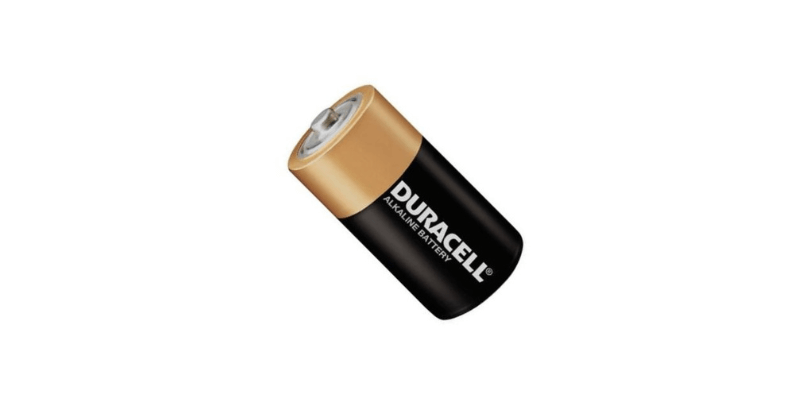
Applicazioni
Le celle a secco, batterie portatili note per la loro praticità, sicurezza e affidabilità, vengono utilizzate in varie applicazioni. Ecco alcuni usi comuni:
Elettronica di consumo:
- Telecomandi: Per TV e condizionatori.
- Radio portatili: per ascoltare musica o notizie mentre sei in movimento.
- Torce elettriche: per illuminare le aree buie.
- Orologi: per la misurazione dell'ora in dispositivi come orologi da parete e sveglie.
- Calcolatrici: per calcoli matematici.
- Fotocamere digitali: per potenziare le funzioni della fotocamera.
- Lettori CD/DVD portatili: per la riproduzione audio e video.
- Lettori MP3: per ascoltare musica.
Giocattoli e giochi:
- Giocattoli telecomandati: automobili, aerei, ecc.
- Giocattoli a batteria: bambole, action figure, giochi elettronici.
Attrezzatura di emergenza:
- Luci di emergenza & radio: forniscono luce e notizie durante le interruzioni.
Altre applicazioni:
- Dispositivi medici: apparecchi acustici e monitor elettrici.
- Strumenti scientifici & equipaggiamento militare.
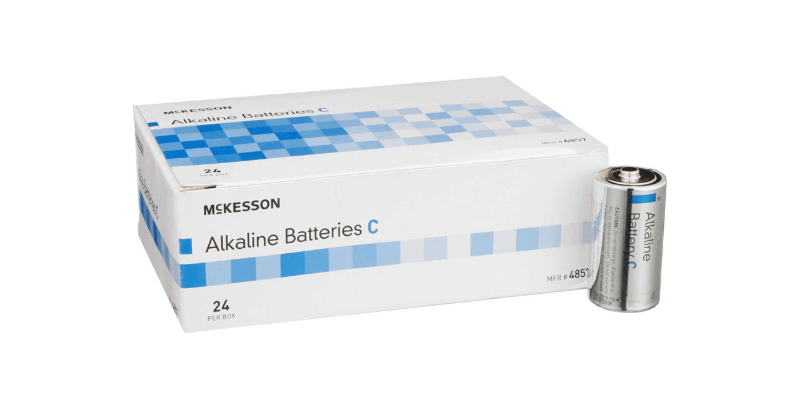
Cos'è una batteria a celle umide?
Composizione e struttura
In una batteria a celle umide, i componenti sono immersi in una soluzione elettrolitica liquida. Gli elementi chiave includono:
- Anodo (Elettrodo Negativo): Realizzato in piombo (Pb), si ossida durante la scarica e rilascia elettroni.
- Catodo (elettrodo positivo): composto da biossido di piombo (PbO2), acquista elettroni durante la riduzione al catodo.
- Soluzione elettrolitica: a differenza delle celle a secco, le batterie a umido utilizzano una miscela liquida di acido solforico (H2SO4) e acqua (H2O) per facilitare il flusso di ioni.
- Separatore: un separatore poroso impedisce il contatto diretto tra l'anodo e il catodo consentendo al tempo stesso il passaggio degli ioni per evitare cortocircuiti.
- Involucro: un involucro di plastica o di gomma durevole ospita il gruppo, con la soluzione di elettroliti e fornendo supporto strutturale.
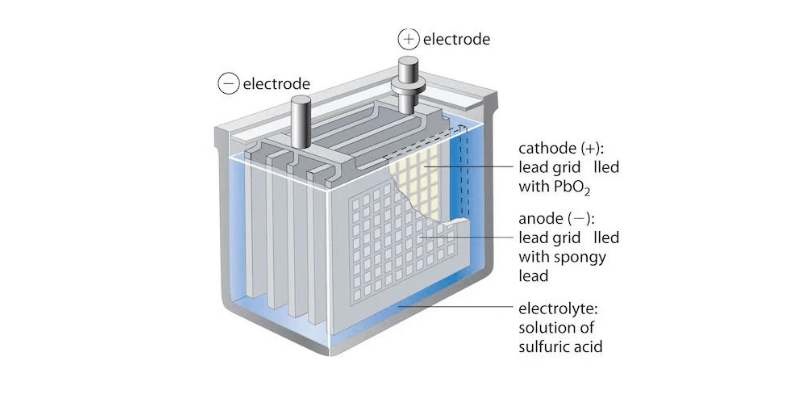
Vantaggi e svantaggi
Vantaggi delle batterie a cellule bagnate:
- Alta densità di potenza: Le batterie a cellule bagnate, in particolare l'acido di piombo, forniscono una produzione ad alta potenza per applicazioni che necessitano di improvvisi esplosioni di energia, come l'avvio di un motore dell'auto.
- Basso costo: Sono generalmente più convenienti rispetto ad altre tecnologie della batteria su base per watt.
- Durata del ciclo lungo: Con una manutenzione adeguata, le batterie a cellule bagnate possono durare molti anni, in particolare nelle applicazioni del ciclo profondo.
- Racclicità: Le batterie al piombo-acido sono altamente riciclabili, minimizzando l'impatto ambientale.
- Ampia disponibilità: Sono facilmente disponibili e sostituibili.
Svantaggi delle batterie a cellule bagnate:
- Manutenzione: Le batterie a cellule bagnate richiedono una manutenzione regolare, incluso il controllo e l'aggiunta di acqua distillata per elettroliti persi.
- Pesante e ingombrante: Sono più grandi e più pesanti di altri tipi di batterie a causa del loro elettrolita liquido.
- Elettrolita acido: L'elettrolita liquido acido è pericoloso se maltrattato.
- Vita ciclistica limitata: Hanno una lunga durata ma si degradano nel tempo, specialmente con scarichi profondi.
- Preoccupazioni ambientali: Lo smaltimento improprio delle batterie al piombo-acido può danneggiare l'ambiente.
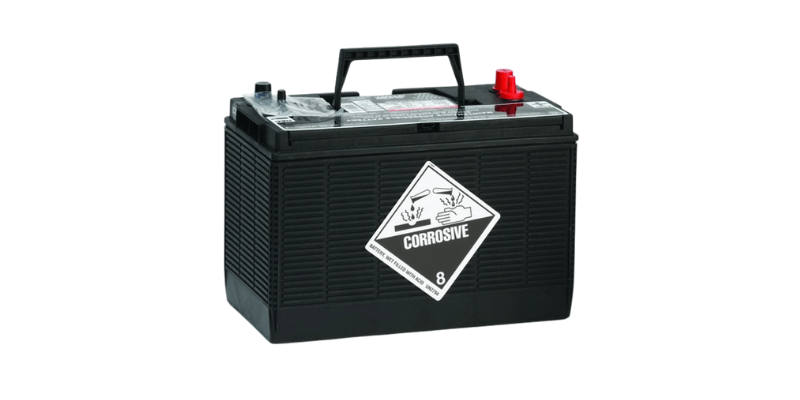
Applicazioni
Le batterie a cellule bagnate, in particolare le batterie al piombo-acido, sono popolari per la loro alta densità di potenza e il basso costo. Le applicazioni comuni includono:
Industria automobilistica:
- Batterie per auto: avvia motori e sistemi elettrici di alimentazione.
- Batterie in moto: sistemi di accensione e componenti di alimentazione.
- Batterie per camion: più grandi delle batterie per auto per carichi più pesanti.
Alimentatori ininterrotti (UPS):
- Server Rooms: potenza di backup durante le interruzioni.
- Home/Office UPS: proteggere le attrezzature sensibili da aumenti e blackout.
Applicazioni industriali:
- Batterie per carrelli elevatori: carrelli elevatori elettrici di alimentazione nei magazzini.
- Accumulo di energia solare: conservare un'energia solare in eccesso per un uso successivo.
- Illuminazione di emergenza: potenza di backup per i sistemi di illuminazione di emergenza.
Applicazioni marine:
- Batterie in barca: elettronica marina di alimentazione, pompe da bilge, ecc.
- Batterie sottomarine: spingere i vasi e il supporto di sistemi di bordo.
Altre applicazioni:
- Cart da golf: carrelli da golf elettrici.
- Attrezzature mediche: fornire energia a dispositivi come ventilatori.
- Telecomunicazioni: potenza di backup per torri.
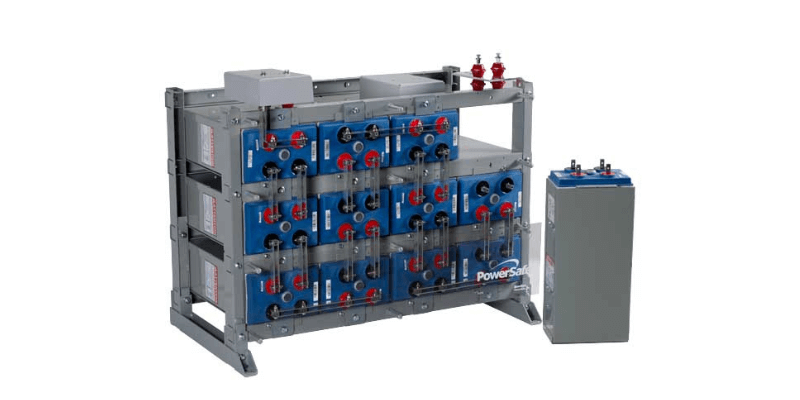
Qual è la differenza tra batterie a cellule a secco e a cellule bagnate?
La differenza principale tra le batterie a secco e quelle a umido è il tipo di elettrolita utilizzato:
Elettrolita
- Batterie a secco: una sostanza pastosa con sufficiente umidità per la conduttività pur essendo sufficientemente solida da evitare perdite.
- Batterie a celle umide: una soluzione liquida, solitamente acida o alcalina.
Portabilità
- Batterie a secco: altamente portatili grazie al loro elettrolita solido.
- Batterie a celle umide: meno portatili a causa dell'elettrolita liquido.
Manutenzione
- Batterie a secco: manutenzione minima richiesta.
- Batterie a celle umide: richiedono una manutenzione regolare, come il controllo e l'aggiunta dell'elettrolito.
Sicurezza
- Batterie a secco: più sicure delle batterie a umido perché sono meno soggette a perdite di elettrolito. La pasta elettrolitica immobilizzata riduce al minimo i rischi di incidenti.
- Batterie a cellule bagnate: possono essere pericolose a causa della loro soluzione corrosiva di elettroliti, che pone rischi di sicurezza se maltrattato o danneggiato.
| Caratteristica | Batteria a celle a secco | Batteria a cellule bagnate |
| Elettrolita | Sostanza simile a una pasta | Soluzione liquida |
| Portabilità | Altamente portatile | Meno portatile |
| Manutenzione | Manutenzione minima | Manutenzione regolare |
| Sicurezza | Più sicuro | Meno sicuro |
Domande frequenti
Quale è meglio, una cella secca o una batteria a cella bagnata?
La scelta tra una cella secca e una batteria a cella bagnata dipende dall'applicazione e dalle priorità.
Le batterie per auto sono bagnate o secche?
Le batterie per auto sono principalmente batterie a cellule bagnate, utilizzando un elettrolita liquido come l'acido solforico per reazioni chimiche che generano energia elettrica. Sebbene le tecnologie più recenti, come le batterie AGM (tappetino in vetro assorbito), siano etichettate “sigillato” O “Senza manutenzione,” contengono ancora un elettrolita liquido assorbito in un tappetino, classificandole come batterie a celle umide.
Una batteria al litio è asciutta o bagnata?
Le batterie al litio sono classificate come batterie a secco. Sebbene contengano un elettrolita liquido, questo è trattenuto all'interno di un separatore poroso, impedendone il libero flusso. Questo design migliora la portabilità e riduce le perdite rispetto alle tradizionali batterie a celle umide.

